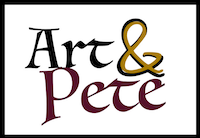
Hildur Guðnadóttir’s haunting theme helped drive Joaquin Phoenix’s Oscar-contending “Joker” performance.
When Joaquin Phoenix struggled early on to wrap his head around Arthur Fleck, the terminally depressed, mentally unstable, and bullied clown-turned infamous Batman nemesis in “Joker,” composer Hildur Guðnadóttir came to the rescue without even realizing it.
It started with Phoenix and director Todd Phillips struggling to complete the scene in the public bathroom following Fleck’s murderous rampage in a subway train. Phoenix wanted to mess around with a dance and Phillips introduced him for the first time to Guðnadóttir’s haunting, cello-driven theme. The result was an unexpected epiphany: “The Bathroom Dance,” in which Phoenix moved soulfully to the rhythm of the music. It began his transformation from Fleck to Joker, and served as the actor’s muse. Thereafter, he could be seen listening to the music in his ear piece on set throughout the shoot.
“The Bathroom Dance” theme returns toward the end of the movie when Fleck emerges as Joker down the long stairs across from his tenement apartment, and then before making his TV appearance with late night talk show host Murray Franklin (Robert De Niro). “Phoenix just told me a couple of weeks ago that this was the moment where he was really able to find the character,” said Guðnadóttir, who won the Emmy last month for her “Chernobyl” score.
Related
Related
“And he was able to go inside his head with the help of the music,” she added. “You could tell that the dance was choreographed to the music. We’re listening along with him. And it was the first scene that they sent me from the shooting, and it was so magical to see that he was basically experiencing the same movements that I had experienced when I was writing the music.”
The cellist/composer was immediately drawn to the Fleck/Joker 1981 origin story from the moment she read the script by Phillips and Scott Silver (a cross between Martin Scorsese’s “Taxi Driver” and “The King of Comedy”). The director especially liked her solo cello works, and invited her to write the score instantly before the start of production. It was like a homecoming for Guðnadóttir to base the entire score around her instrument as Fleck’s requiem of pain: twisting and contorting the cello, processing it electronically, like a sorrowful cry for help and then, ultimately, as a dance for joy.
“Of course, I grew up with the instrument and have a very strong physical and emotional connection to it,” Guðnadóttir said. “Having that as a starting point, I had what was almost like an electric shock when I found his theme. I felt very strongly for him and it was how I imagined his inner world to be. This was the note: his sad and lonely outsider status, his difficulty trying to fit in, and his lack of understanding of why everyone out there doesn’t allow him to be a part their world. And I found that very heartbreaking. You get so angry along with him because the abuse [he suffers] is so unimaginable.”

“Joker”
Nico Tavernese/Warner Bros.
To convey Fleck’s inner turmoil (it’s often difficult to tell what’s real or imaginary), the composer slowly built the orchestration around the cello, having it faintly linger in the background like a ghost before coming to the forefront as the Joker persona takes command. (The score was recorded at the DiMenna Center in New York over a period of one week. The first day they had 36 musicians, but most days thereafter they recorded with about 72 musicians. Vocals had a separate day.)
“I thought that was a good way of representing the emotional forces that are driving him,” said Guðnadóttir. “But he doesn’t realize that they are there. That’s the role of the orchestra. After the attack on the subway train that takes him over the edge, the orchestra becomes more aggressive and more present. The percussion also starts off slowly in a two-note and then builds, pounding like his heartbeat. So I couldn’t use any cool, complicated beats. This was really simple and to the point and then it gets louder and louder.”

“Joker”
Warner Bros.
The “Bathroom Dance,” like most of the score, was played on a special electric cello called the halldorophone, a feedback instrument connected to an amplifier that Guðnadóttir has experimented with for years, performed live and then processed. But, on “Joker” she used it for its utmost creepiness. The composer also played around with computer processing for strings, piano strings, and meaty drums. “That music during the subway train scene is a bit more fantastical so it has elements of aggression and some kind of sugarless fanfare in the mix as well — it’s just so chaotic and out of control and he just snaps.”
Guðnadóttir found “Joker” the rare collaborative experience in which she became one with Fleck and his dark unmasking. “I think that Todd was remarkably clear throughout the whole process what he wanted to say and how he wanted to say it,” she added. ” He gave me so much space and so much trust. And that was wonderful to grow with the project, where you’re not just running after the last cut and are able to really dive deep into the character and the story. And, for me, it was a beautiful process to be a part of.”
Sign Up: Stay on top of the latest breaking film and TV news! Sign up for our Email Newsletters here.






